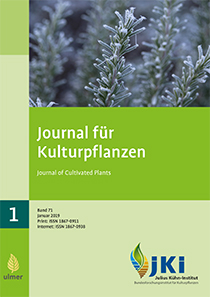The effect of arbuscular mycorrhiza, rice husk compost and biochar on Iranian borage <em>Echium amoenum</em> Fisch & C. A. Mey and post-harvesting soil properties
DOI:
https://doi.org/10.5073/JfK.2019.01.02Keywords:
Rice husk compost, Rice husk biochar, Mycorrhiza, Echium growth, Soil propertiesAbstract
This study was conducted to investigate the effect of rice husk compost (RHC), rice husk biochar (RHB) and mycorrhization (MY) on some properties of Iranian Echium amoenum Fisch & C. A. Mey and also on some selected post-harvesting soil properties. A completely randomized design experiment was conducted with six treatments and six replications. Treatments comprised T1: control, T2: MY, T3: RHC, T4: RHB, T5: RHC + MY and T6: RHB + MY. Studied parameters included; shoot and root fresh weights, root and leaf length, shrub height, leaf number, shoot and root NPK content, shoot and root Fe, Zn, Cu and Mn concentration, root colonization percentage, soil NPK status, soil micronutrients concentrations, soil respiration and microbial biomass. Results revealed that application of RHC, RHB and MY individually or in combination with other treatments significantly affected studied parameters. In all cases except for root colonization, combined application (T5 and T6) had more satisfied impacts compared with a single application of treatments.
DOI: 10.5073/JfK.2019.01.02, https://doi.org/10.5073/JfK.2019.01.02
Published
Issue
Section
License
The content of the journal is licensed under the Creative Commons Attribution 4.0 License. Any user is free to share and adapt (remix, transform, build upon) the content as long as the original publication is attributed (authors, title, year, journal, issue, pages).
The copyright of the published work remains with the authors. The authors grant the Journal of Cultivated Plants, the Julius Kühn-Institut and the OpenAgrar repository the non-exclusive right to distribute and exploit the work.







